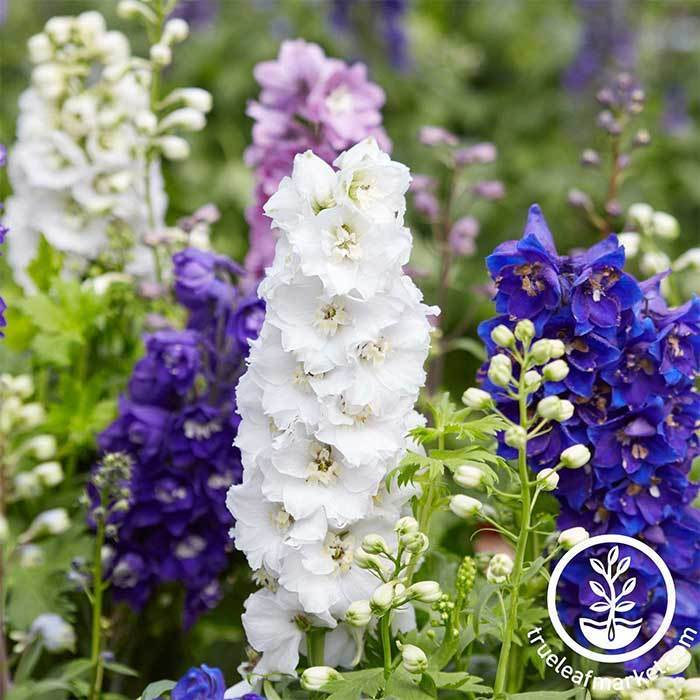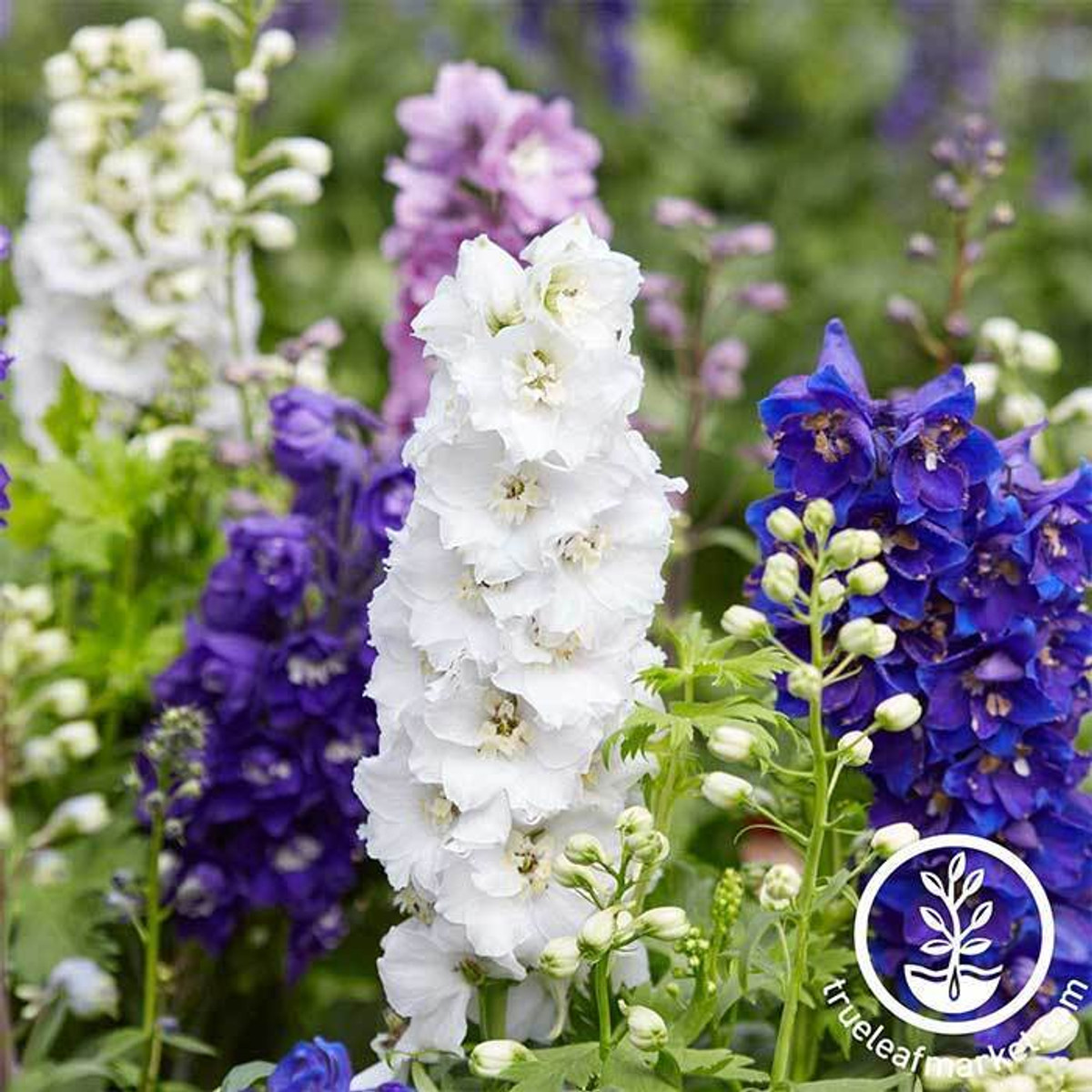Flowers of the Month July
5th Jul 2021
Larkspur July Flower of the Month

How to Grow Larkspur Flowers
Annual, Consolida Orientalis
Most likely, you first saw the tall and stately spikes of Larkspur growing in your grandparents flower garden. When in bloom, these big flower spikes are lovely in the garden and indoors in vases. Colors include light and dark pink, blue, rose, lavender and white.
Larkspur are members of the Delphinium family. There are many varieties of Larkspur, so it should not surprise you that they range in height from one to seven feet.
Best of all, tall growing Larkspur plants produce flowers that burst into bloom in the spring when many other flowers are still weeks away.
Did you Know? Larkspurs can be poisonous to some animals, most notably cattle.
Plant Height: 3' - 5'
Plant Propagation:
Larkspur are started from seed. Directly sow Larkspur seeds into your flower garden after all danger of frost.
Sow seeds early in the season and cover lightly with 1/8" of garden soil. Space them 4 inches apart and thin seedlings to 10-12 inches apart.
Larkspurs are Rhizomes. You can separate the rhizomes of established plants and replant in new areas.
Days to Germination: 10 - 15
How to Grow Larkspur Plants:
Larkspur plants like full sun to partial shade. They are very easy to grow and grow rapidly. They do well in average soils and in cool weather. The soil needs to be kept moist to feed their quick growth. Water them during dry periods, once or twice per week. Add a general purpose fertilizer once a month until after they have bloomed.
Cut blooms just before they peak. Place in vase and arrange with other flowers, or alone by themselves.
Once your Larkspur plants are established, they will grow well until the first frost. Larkspur are annuals and highly susceptible to frost.
Flowers Bloom: Summer thru Fall
Insect and Disease:
Fungal disease is common, most notably Sclerotium rot which yellows leaves and wilts plant. Larkspur is also affected by mildew. Treat affected plants immediately with a general purpose fungicide. Remove seriously diseased plants to keep the disease from spreading.
Insect problems are less frequent. Organic or chemical insect repellents are effective against most pests.

